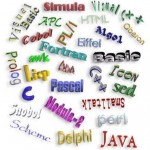Everything about Web and Network Monitoring
by Angela Kaye Mason | Feb 15, 2013
 Let’s face it. Not all of us can be hardcore programmers who have mastered every programming language. As a matter of fact, it is very likely that very few people can actually boast of such an accomplishment. The reason behind this is quite simple; there are so many strange and mostly unknown programming languages out there that many of the toughest programmers have no clue what they are. Let’s take a look at some of the weirdest programming languages today.
Let’s face it. Not all of us can be hardcore programmers who have mastered every programming language. As a matter of fact, it is very likely that very few people can actually boast of such an accomplishment. The reason behind this is quite simple; there are so many strange and mostly unknown programming languages out there that many of the toughest programmers have no clue what they are. Let’s take a look at some of the weirdest programming languages today.
Befunge
MakeUseOf shares with us a programming language known as Befunge. Invented in 1993 by Chris Pressey, this programming language is said to be a stack-based, reflective, esoteric one. It is different from other, more conventional languages because its programs are arranged on a grid which is two-dimensional. (Wikipedia) This language was designed in a way that makes it possible to experiment with weird ideas, and is actually supposed to be difficult. It was initially supposed to be a joke, and is not really meant for practical use. MakeUseOf actually points out that Befunge was created to be as difficult to compile as possible. It is a great companion to another weird programming language on our list, INTERCAL.
INTERCAL
Listverse describes INTERCAL has the invention of Donald R Woods and James M Lyon in 1972. It is reported as being “probably the first ever esoteric programming language.” It was invented to have no similarities to any existing programming language. The name of the compiler, according to Woods and Lyon, is “Compiler Language With No Pronounceable Acronym.” Wikipedia explains that INTERCAL “satirizes aspects of the various programming languages at the time, as well as the proliferation of proposed language constructs and notations of the 1960s.” There are currently two versions of INTERCAL that are still maintained.
False
This programming language is reported by Babel Machine as being one of the weirdest programming languages ever designed. It became an inspiration for programmers to develop more of the esoteric programs, similar to Befunge and such. False was developed in 1993 by Wouter van Oortmerssen, and is much more tractable than other esoteric programming languages. According to Wikipedia, it provides fundamental operations which are pretty sensible, and not very complex.
Shakespeare
Written in a language which looks much like Shakespeare’s plays, this programming language is reported by MakeUseOf to have a “beautiful source code.” The main reason that Swedish pair Jon Åslund and Karl Hasselström created this language was to make programs look like something other than programs. Included in this programming language are characters, titles, scenes, acts, enter, and exit directives, making it look much like the plays of Shakespeare.
Velato
Another programming language which was inspired by the arts is Velato. Listverse explains that Velato uses MIDI files as its source code. Its programs are “defined by the pitch and order of notes.” Its design is to allow the composition to be flexible in order to ensure that all of the functional programs will sound like random notes. Just like any other MIDI file, Velato programs can be represented as sheet music.
Those are just a few of the world’s weirdest programming languages. Some are intended to be beautiful, some were created to be different, and others were just meant to be difficult. Most of them were created, “just because we can.” Serious geeks can be just as interested in these various programming languages as the archaeologist is in priceless artifacts, so take your time, check them out, and let us know which ones you liked best!
Category: Just for Fun | Tagged No Comments.








